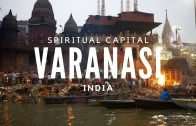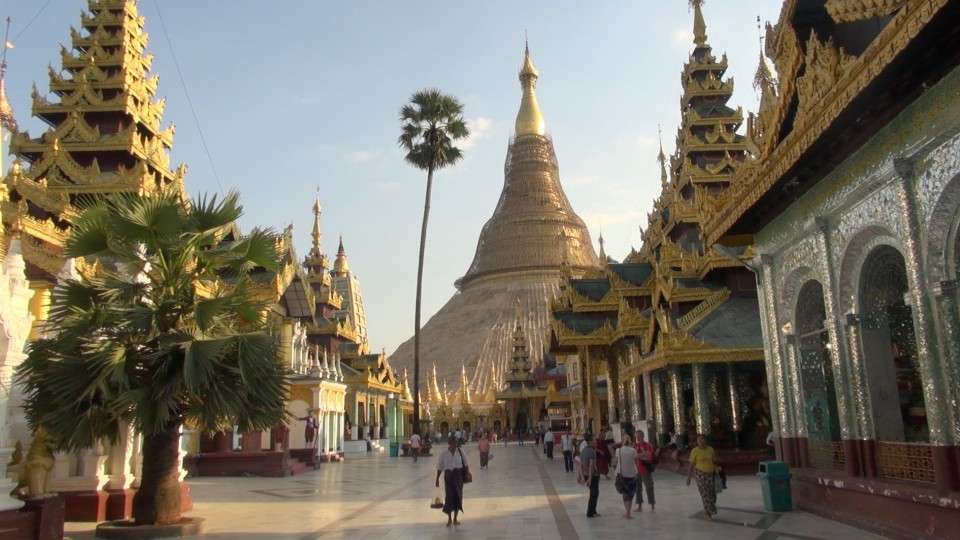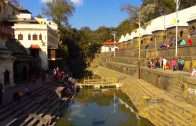Delhi – the capital of several empires over 2000 years
Delhi is India‘s capital and the seat of government. Delhi is one of India‘s largest cities and the core of one of the largest metropolitan areas in the world. As the capital of several empires over the last 2000 years, Delhi contains well-preserved historic sites for the tourist to visit.
Delhi is so vast that is not possible to see all of it in a few days, the hectic and heavy traffic make for long journeys, and at certain times of the year, such as after the Diwali festival, brings heavy and thick pollution that makes sightseeing almost impossible. Unique themed neighbourhoods, such as the pottery district, would need days to explore, photo opportunities and willing friendly locals eager to be in the shot.
Much of Delhi is pedestrian-hostile. Distances are long, road signage is poor, and in the more tourist-oriented areas, you’ll be accosted by beggars and touts. Crossing roads often involves wading across multiple lanes of heavy traffic. Move-in a predictable straight line, so vehicles can weave around you. Better yet, latch onto a group of locals and cross in their shadow.
Delhi is known for its impressive range of structures – fortifications, mosques, and tombs – built during the centuries when Delhi was the centre of large Muslim empires. There are literally dozens of notable sites scattered around the city, and several of them are internationally famous as UNESCO World Heritage Sites. The most visited sites are the Red Fort (the 17th-century palace of the Mughal emperor), Jama Masjid (a vast and beautiful 17th-century mosque), the Qutub Minar (a 73-meter high tower, dating to the 13th century but still with well-preserved intricate carvings), Humayun’s Tomb (the vast 16th-century tomb of a Mughal emperor), and Purana Qila (a 16th-century Mughal citadel).
Newcomers are often confused about the relationship between Delhi and New Delhi. In fact, New Delhi, which is the capital of India, is one of the districts of Delhi city. New Delhi began to be built in 1911. Being centrally planned in the modern era, it features wide boulevards, large parks, and roundabouts between its government buildings. Popular sights here are the India Gate, the Rajpath “national mall” connecting the main government buildings, and the Rashtrapati Bhavan (presidential palace). Many of the most important museums in Delhi are located here too.
History
Delhi is said to be one of the oldest existing cities in the world, with evidence of continuous settlement dating back to the 6th century BC, legend estimates it to be over 5,000 years old. Thought to have been built and destroyed eleven times, evidence of at least eight distinct settlements can still be seen in Delhi. The most well-preserved historic sites are from the periods of Muslim and British rule, between 1193 and 1947. From the 10th to the 14th century, the city was centred in what is now South Delhi.
Delhi Suggested Itinerary
Go on a guided tour of Delhi and drive past Lutyens New Delhi. Known as ‘Rajpath’ or ’Kings Way’- the wide tree-lined avenues served as the capital city for the former British Empire. Among the buildings, you drive past are the Secretariat buildings, Parliament House, Presidential Palace (Rashtrapathi Bhawan), and India Gate, a memorial to 82,000 soldiers of the undivided Indian Army who died in the period 1914–21.
Visit Gurudwara Bangla Sahib, the most prominent Sikh house of worship in Delhi, visit Agrasen ki Baori – a 60-meter long and 15-meter wide historical step well. Then visit the great Jama Masjid, the most important mosque in India. Then set off on a rickshaw ride through Chandni Chowk 17th-century market, inching your way through a maze of ox carts, cars, and the occasional wandering cow, explore the spice markets, jewellery market & the clothes market.
Continue to the Qutub Minar complex which has many historic monuments. The first mosque in India – The Quwwat-Ul- Islam – built from the dressed and carved stones of demolished temples lies in this complex. It establishes the political victory of Islam in Northern India. The Qutub Minar itself began in 1199 by Qutub ud din Aibak and was completed by his successors.
Monuments
Rajpath, This is the main parade route that leads from Rashtrapati Bhavan (the President’s residence) to India Gate, with many grassy lawns along the way.
India Gate, This monument has been built as a memorial for the Indian soldiers who died in World War I. There is also a fire (“eternal flame”) burning for all fallen Indian soldiers.
Jantar Mantar. One of five astronomical observatories commissioned by Sawai Jai Singh II of Jaipur during the 18th century. The odd structures inside are actually enormous scientific instruments for measuring the movement of celestial bodies
Raj Ghat. Memorial to Mahatma Gandhi at the site of his cremation.
Qutub Complex
This complex in Mehrauli houses structures dating from the Slave Dynasty (1206-1290) and is designated as a UNESCO World Heritage Site.
Qutub Minar, The most famous structure on grounds, this 72.5 m minaret was the tallest “skyscraper” in the world when built (1193-1368) – it was constructed on the orders of Qutb-ud-din Aybak.
Quwwat-ul-Islam Mosque, Delhi‘s first and grandest mosque, now mostly in ruins, but many parts of the complex are still standing and the sandstone decorations are still impressive. Check out the extraordinarily ornate carvings near the tomb of Iltutmish on the west side of the complex.
Iron Pillar, iIn the centre of the mosque. This is a 7 mertre iron pillar erected in 400 AD by Chandragupta II Vikramaditya, also known as “he, by the breezes of whose prowess the southern ocean is even still perfumed” according to the inscription carved on the base. Alas, Chandragupta II’s perfume has long since faded, but to the amazement of metallurgists everywhere, his pillar is still going strong, after 1,600 years.
Ala-i-Minar, Ala-ud-din-Khilji set out to build a tower twice as high as the Qutub Minar but died after a mere 24.5 m was complete. The first story stands to this day.
Ala-i-Darwaza, This square, the domed building once acted as the entrance to the mosque but is now tucked away behind the minar. Inlaid marble decorations and latticed stone screens.
Tomb of Imam Zamin, Outside the main complex, next to the Ala-i-Darzawa, this octagonal tomb commemorates Turkestani iman who was based in the mosque during the reign of Sikandar Lodi.
Red Fort
The Red Fort (Lal Qila) is one of Delhi‘s top tourist sights. A brilliant red sandstone fort built by the Mughal Emperor Shah Jahan (who also built Agra‘s Taj Mahal) as his ruling palace. Completed in 1648, the years since have not treated the buildings kindly: the rooms have long since been stripped of all objects, the marble inlays are long gone and quite a few buildings are off-limits. Still, the scale remains imposing and the gardens are kept lush and green even in midwinter. Major buildings include:
Chatta Chowk, (Covered Bazaar). True to the name, this is a covered bazaar between the gate and the fort itself, now filled with souvenir hawkers.
Diwan-i-Am, (Hall of Public Audience). This building separates the outer court from the inner court and has a marble platform for the emperor’s throne.
Hayat Baksh Bagh, (Life-Bestowing Gardens). Once a grand garden of full of fountains and streams, now sadly all dry — only dry channels and acres of green grass remain.
Diwan-i-Khas, (Hall of Private Audience). Built completely of marble, this is where the emperor received special visitors.
Khas Mahal, (Private Palace), The Emperor’s main residence. The octagonal Mussaman Burj tower looks out toward the Yamuna River and is where the Emperor used to appear before the public for each morning.
Rang Mahal, (Colour Palace). The residence of the Sultan’s main wife.
Mumtaz Mahal, (Jewel Palace). Contained six apartments for the Sultan’s harem. Now used as a museum of court textiles, carpets, weapons, etc.
Daawat Khana, A minor palace at the northmost end of the Fort, this was originally the residence of a prince, but it was converted into a tea house by the British, a function it continues today.
Swatantra Sangrama Sangrahalaya, (Museum of the Independence Movement). To the left after the Chatta Chowk, this is a reasonably well-presented museum on the history of independence activism in India, starting from the Mutiny of 1857 all the way to Gandhi.
Humayun’s tomb
Humayun’s Tomb in south Delhi is one of Delhi‘s three UNESCO World Heritage Sites.
The tomb is in large, immaculately maintained gardens in the Persian Char Bagh (four corners) style that was thoroughly renovated in 2003 with the Aga Khan’s help and is consequently probably the best in Delhi. As you enter the complex, the first major structure on your right is the bulbous, octagonal tomb of Iza Khan, a court noble who built it in his own lifetime, some 20 years before Humayun’s tomb. As you pass through the first gate, you will glimpse the dome of the tomb and enter a floral path leading to the second (West) gate, which now acts as the entrance to the giant central garden.
The centrepiece is the tomb of Humayun, the second Mughal emperor. Built starting in 1562, was the first major Mughal structure in the city and has been described as a predecessor or prototype of Agra‘s Taj Mahal. The structures are, indeed, stylistically similar, although Humayun’s Tomb is built from red sandstone, not white marble, and was built by a wife grieving for her husband, not the other way around. You can climb up to the second level (the stairs on the west side are very steep, those on the south side less so), and on the south side, you will find the entrance into the main crypt where Humayun is buried.
Religious Buildings
Bahá’í Lotus Temple Shaped like a lotus bud with 27 petals, this stunning temple suspended above milky-blue ponds is surely one of the most magnificent monuments ever made from concrete, however, there is very little to see inside. The lush park around is well landscaped but mostly off-limits.
Gurudwara Bangla Sahib is the main gurudwara for the many Sikhs of Delhi. You will need to cover your head (scarves provided for free) and stash your shoes in the shoe storage run by volunteers.
Gurudwara Sis Ganj, Chandni Chowk (Old Delhi). An important Sikh place of worship. Built on the spot where their ninth guru, Guru Tegh Bahadur, was beheaded on the orders of the Mughal emperor Aurangzeb, it is an oasis of calm in the chaos of Old Delhi’s Chandni Chowk. You will need to cover your head (scarves provided for free) and stash your shoes in the shoe storage run by volunteers (also free).
Jama Masjid, The largest mosque in India and a must-see while in Delhi.
Hijron Ka Khanqah
A unique place to visit is Hijron Ka Khanqah, a story of India‘s age-old tolerance to the transgender(ed). Hijron Ka Khanqah is a pre-Mughal, Lodhi period monument dated to the 15th century known for being the burial place of eunuchs of Delhi during the Lodhi dynasty’s reign.
Hiron ka Khanqah is an Islamic monument, a Sufi spiritual retreat for eunuchs. It is located in a narrow lane called ‘Chatta Wali Gali’ of main Mehrauli road.
Hijras are a word historically used to describe eunuchs, now more widely refers to an organized spiritual and social community that includes eunuchs, transgender, intersex, or third gender people in India.
This graveyard and the walled mosque are a pre-Mughal, Lodi period, monument dated to the 15th century. Forty-nine hijra are buried beneath the white tombs that fill the cemetery. The larger, ornate monument is said to honour a eunuch named Miyan Saheb.
It is maintained well by the Hijras of Turkman Gate, in Old Delhi who is in possession of this 15th-century monument since the 20th century.
Delhi is a fascinating city to explore but only if you have the time to do it right. I wish I had more than just the two days as there was so much more I wanted to learn and watch the life of the city in a less than rushed way.
















